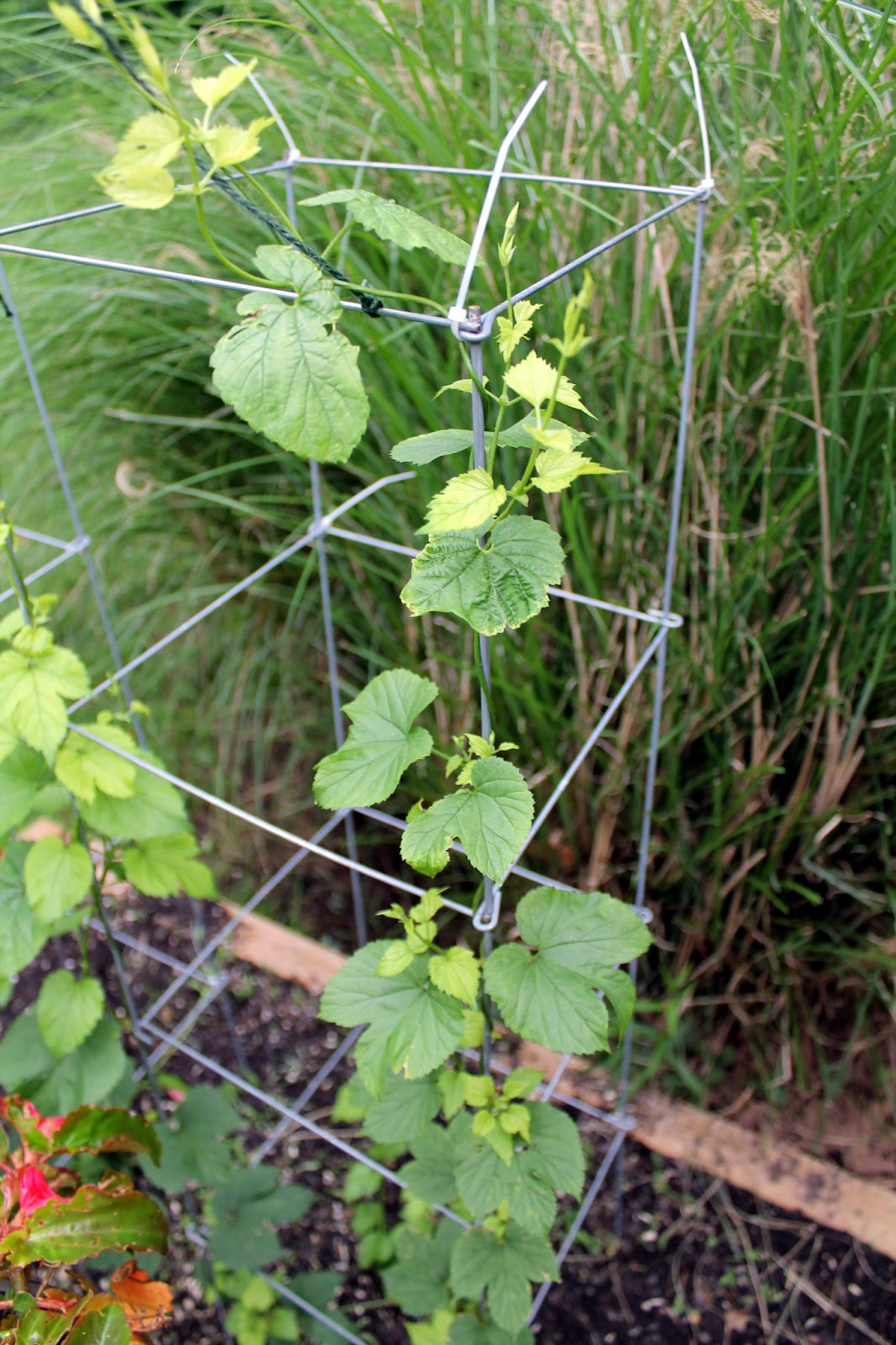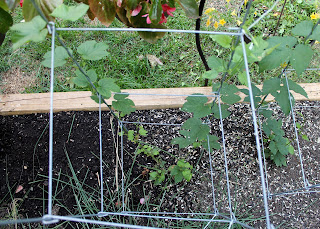My first hop cones have appeared! Good news indeed for the Columbus:
They're not fully formed yet but those hairy looking buds sticking out will become cones in the fullness of time if all goes well. There is also some sign on the Cascade of upcoming coneage:
They're not fully formed yet but those hairy looking buds sticking out will become cones in the fullness of time if all goes well. There is also some sign on the Cascade of upcoming coneage:
These are only buds at present so may well turn out to be more leaves but I can keep my fingers crossed in the meantime. No sign on the Willamette as yet. There's still time (I keep telling myself).
Not everything has been going my way though. I have recently found what I think is a Japanese beetle on the underside of a leaf of the Columbus:
Identifying this bug was made easier because of the research I did last year trying to identify a June bug. This is the first time I've seen one but I suspect not the first time I have seen its handiwork:
I have a feeling they are likely to be as voracious as June bugs, so I will be treating them with extreme prejudice. Needless to say this one will not be bothering my hops again. On a slightly brighter bug note I have seen several of these guys:
Here's a slightly better view (if you look closely):
The larvae, just like the adults, are pretty keen on eating other pests, so I'm more than happy to leave them be. Can't really see them taking down an adult Japanese beetle so I may have to deal with those myself.
Something that has been a wee bit of a mystery was one morning finding the twine holding up some of the Columbus cut and the growth from the shepherd's hooks lying on the ground. Seems no real damage was done, fortunately. The mystery is how it (twine on the left) was severed:
Perhaps that bit of twine just had a weakness. We had had very heavy rainfall overnight so that may have been the cause, although we have had similar rainfall since without anything similar happening again. The other possibility is that a bird did indeed decide to try and use it as a perch with the very obvious outcome. Anyway, I have tied some knots and strung it up again:
This time, to make my life easier, I've looped the twine over the upper iron hook and tied it to the lower one. This way I don't need a ladder to reach it. It has survived our most recent storms so fingers crossed it'll hold and the bird that got a shock when it tried to land on my twine has learned its lesson. The other birds are probably still making jokes about it needing to go on a diet.







































